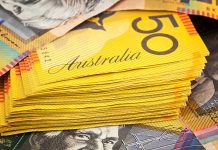Returning from 10 days away in Eastern Indonesia, it seems like my uncanny ability to head off on holiday just before market inflexion points is alive and well. I still have five days holiday left for this year, so I will let readers know when I intend to take them so that you can all buy volatility.
A few things have played out in my absence, some expected, some not; such is the way of the world’s capital markets. The US dollar is finally on its way higher, although the rally has been driven by a flattening of the US yield curve and Euro-virus nerves, and not by a rise in longer-dated US yields. It is clear that longer-term inflation expectation remains anchored capping long-dated yields, helped along by the Fed. Short-dated yields are rising, flattening the curve, and, for now, that is where the stress of the US inflation picture is being felt.
Energy and base metal prices have continued to ease. The first was driven by President Biden & Co’s threats to release strategic reserves, soggy data from Europe along with its new wave of virus restrictions as infections sore in wave number four. Industrial commodities such as coal and iron ore have been crushed thanks to China talking them down, increased domestic coal production and its power crunch restricting industrial demand.
Stock markets continue to trade at or near record highs in the US, and who can blame them? US data remains strong although the inflation noise gets louder by the day. And markets there know that the Fed has an even weaker appetite for negative price action than someone who bought bitcoin at USD 67,000.00. Interestingly, the Dow Jones has retreated since the Biden infrastructure package was passed, perhaps warning that even the perpetual mega-bulls of Wall Street, back-stopped by the Fed, could be in for some two-way price action into the year-end.
European equities are still holding up but in Asia, the picture is far murkier, thanks in no small part to China’s shared prosperity policies, clampdowns, property sector nerves, power crunch, stagflationary environment, insert China risk here ………. If Europe faces a winter of virus lockdowns and discontent, and a cold winter with challenged gas supplies, even the ECB, in its permanent role as the European governments’ chief-debt-monetiser, will struggle to keep the recovery going. That’s what happens when you lack the imagination to do anything by QE forever, you get declining marginal utility for your efforts, just ask Japan.
Gold has finally cracked its mega-resistance at USD 1835.00 an ounce, despite a very much stronger US dollar. It seems that with long-dated US yields in a permanent state of suppression, short-dated US yields are rising in response to inflationary noise and strong US data, and that is what gold is responding to. If the Fed bows to reality and hastens the taper, something the Vice-Chairman suggested last week, gold could yet find itself in another false dawn. But a move towards USD 2000.00 an ounce before the December FOMC can’t be ruled out.
On the Fed, President Biden will announce whether Jerome Powell retains his job after my birthday in February next year or whether he decides to go with Lael Brainard. If Ms Brainard, an uber dove, gets the nod this week, expect US stocks to jump higher and to see some temporary US dollar weakness.
The US data calendar is relatively thin this week, so the Fed Chair news could have an outsized effect. US data is front-loaded to the front half of the week, with Markit PMIs tomorrow, and Durable Goods and October PCE on Wednesday. Thanksgiving, the annual silence of the turkeys, is on Thursday with a partial holiday I expect many Americans to turn into a long weekend, on Friday, That will notably impact volatility in the second half of the week.
European and Australian Markit PMIs are released tomorrow and with growth nerves frayed this week, I am hearing the term stagflation used a lot these days as the world catches up to me; markets will be more sensitive to weaker prints. Australia should outperform as the reopening peace dividend grows. Europe, on the other hand, is going backwards. New restrictions are sweeping the continent as cases surge, as are protests against them. A run of weaker data, notably from Germany, and with Russia showing more proclivity to mass armies on the Ukrainian border, rather than pump natural gas through it, makes it hard to construct a bullish case for the Eurozone at the moment. Weak PMIs will make that negative noise louder although I expect the euro to take the brunt of the pain. The United Kingdom has, by contrast, performed fairly well recently, but risks guilt by association with the Eurozone.
In Asia, China has left its one and five-year Loan Prime Rates unchanged as expected today, with the PBOC adding liquidity to the system via the repo market once again. The latter appears to be its favoured method of quiet support. Capturing the headlines were government officials over the weekend telling banks to limit speculation in the yuan, i.e., stop buying it. The PBOC also set a weaker yuan fix versus the US dollar today. Despite US dollar strength elsewhere, the yuan has continued to appreciate as well, thanks to strong export performance and domestic bond market inflows. The PBOC may finally be signalling that its tolerance for a stronger yuan, particularly on a TWI basis, is waning. A situation exacerbated by the fall of the euro and the yen.
The Bank of Korea has a policy announcement on Thursday with a 0.25% rate increase to 1.0% tentatively pencilled in by markets. I’m 50/50 on this as despite inflation being well north of 3.0%, the Bank of Korea may be watching developments internationally and erring to the side of caution. Notably, the won is not trading like the BOK is going to hike this week. Japan may announce a petroleum reserve release this week, and possibly more supplementary budget number 39459549409 details. It is a short week in Japan with a national holiday tomorrow.
Speaking of central banks who have dropped the ball from their ivory towers and let the country down, the Reserve Bank of New Zealand announces its latest policy decision this Wednesday. Having postponed a previous rate hike due to the arrival and subsequent embedding of the delta-variant in New Zealand, the question on Wednesday is whether it will be 0.25% or 0.50%. As a Kiwi, I can tell you it needs to be 0.50% but markets appear to be pricing 0.25% if the NZD/USD rate is anything to go by. New Zealand releases Retail Sales tomorrow and if the QoQ Q3 number is positive, despite the Auckland lockdown, expect a 0.50% hike to get rapidly priced into the kiwi. Of course, the ambivalent economic inequality over heaters of the RBNZ may choose the global central bank strategy de rigour and go for a fence-sitting hawkishly dovish 0.25% hike. The New Zealand dollar could be in for a wild ride this week.
As for Asia today, I think it could best be described as nervously unchanged, and I don’t blame them for feeling that way one bit.












